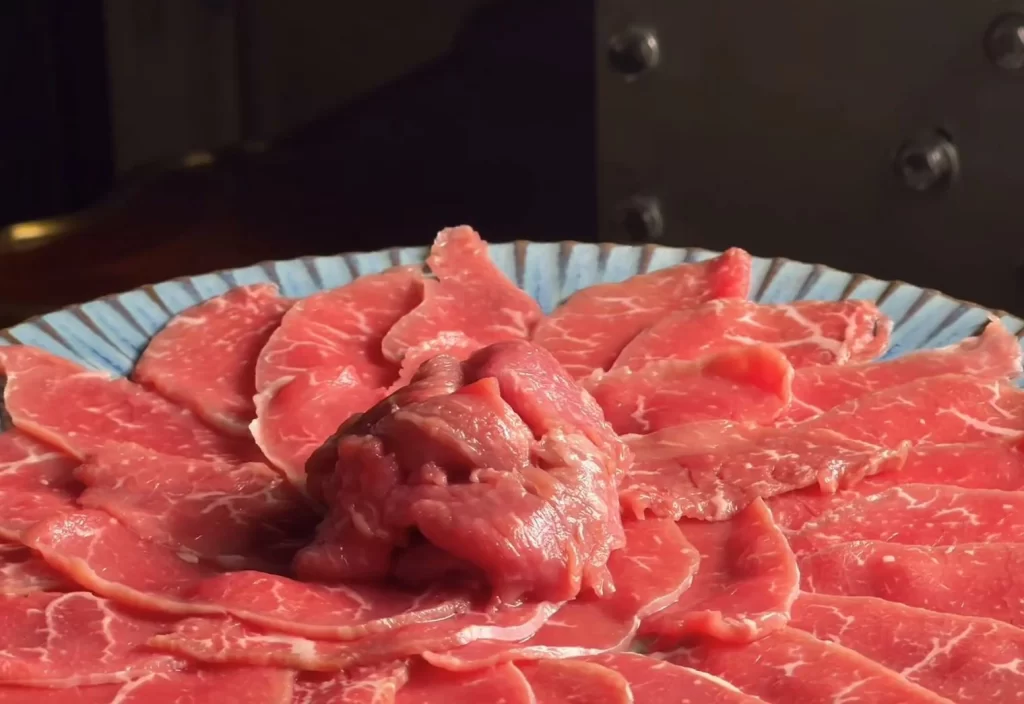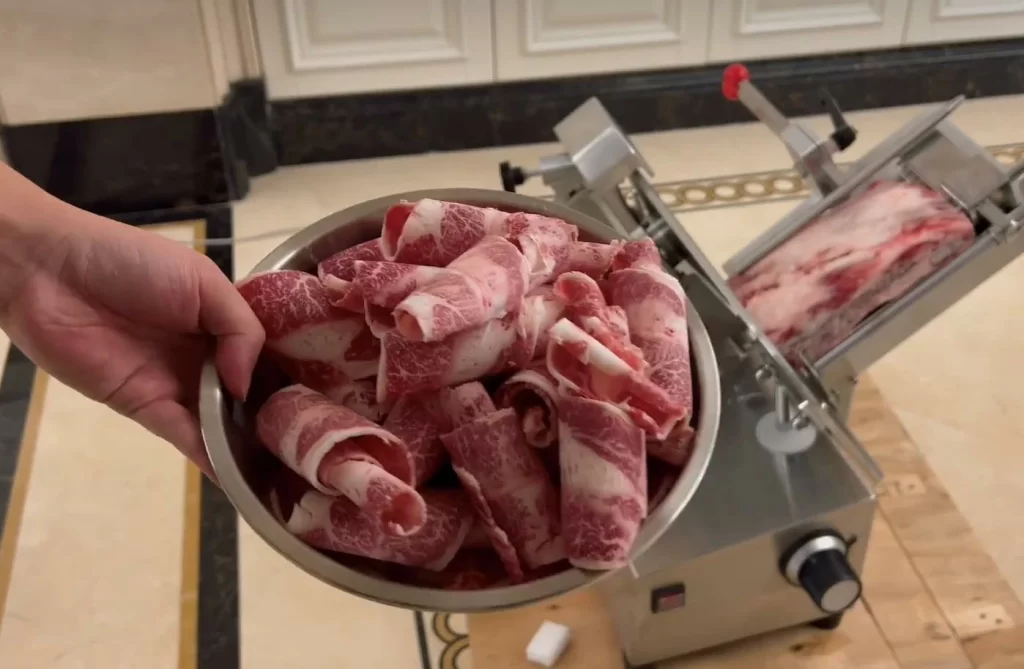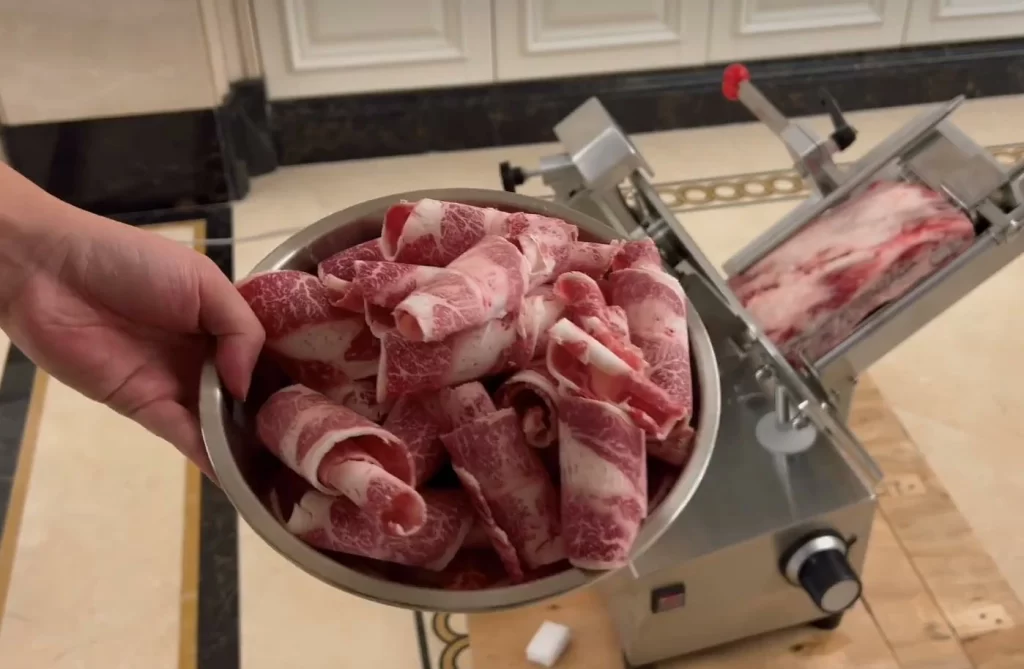
Unlocking the Versatility of a Meat Slicer: Slice With Precision
Are you tired of struggling to cut through tough slabs of meat or spending hours slicing deli-style meats for sandwiches? Look no further than the versatile and efficient meat slicer. With its precision blade and adjustable settings, a meat slicer becomes an indispensable tool in any kitchen, whether you’re a professional chef or a home cook.
Gone are the days of uneven and jagged cuts. A meat slicer guarantees consistent thickness, allowing you to create perfect slices of meat, cheese, vegetables, and more. Its versatility goes beyond just slicing; with attachable blades, you can effortlessly julienne, dice, or cube ingredients for your favorite recipes.
Not only does a meat slicer save you time and effort, but it also enhances the presentation of your dishes. Impress your guests with beautifully arranged cold cuts or create paper-thin slices for elegant garnishes.
Investing in a meat slicer unlocks a world of culinary possibilities. Say goodbye to the hassle and hello to precision slicing – it’s time to elevate your kitchen game.
Slice with precision and unleash your culinary creativity with a meat slicer today!
Benefits of Using a Meat Slicer
A meat slicer offers numerous benefits that make it a must-have tool in any kitchen. Let’s explore some of the advantages of using a meat slicer:
- Consistent Thickness: One of the primary benefits of a meat slicer is its ability to provide consistent slice thickness. Whether you’re slicing meat, cheese, or vegetables, a meat slicer ensures each slice is uniform in size, resulting in evenly cooked dishes.
- Time and Effort Saving: Hand slicing can be time-consuming and physically demanding. A meat slicer simplifies the task, allowing you to slice through large quantities of ingredients effortlessly. This not only saves time but also reduces the risk of repetitive strain injuries.
- Versatility: While the name suggests it’s primarily for slicing meat, a meat slicer can do much more. With different blade attachments, you can julienne vegetables for stir-fries, dice onions for soups, or cube cheese for a cheese platter. The versatility of a meat slicer expands your culinary repertoire.
- Enhanced Food Presentation: A meat slicer enables you to create visually appealing dishes. Whether you’re serving cold cuts at a party or garnishing a plate with thinly sliced vegetables, a meat slicer ensures your food looks professional and appetizing.
- Cost Savings: Buying pre-sliced ingredients from the grocery store often comes with a markup. With a meat slicer, you can purchase larger cuts of meat or cheese and slice them to your desired thickness, saving money in the long run.
The benefits of using a meat slicer are undeniable. It simplifies your cooking process, enhances the quality of your dishes, and allows you to explore a variety of slicing techniques.

Types of Meat Slicers
When it comes to meat slicers, there are several types to choose from, each with its own features and capabilities. Understanding the different types can help you make an informed decision based on your specific needs. Let’s take a closer look:
- Manual Meat Slicers: As the name suggests, manual meat slicers require manual operation. They are typically more affordable and suitable for home cooks or small-scale operations. Manual meat slicers are compact, easy to use, and ideal for slicing small to medium quantities of ingredients.
- Automatic Meat Slicers: Automatic meat slicers are designed for commercial use or high-volume slicing tasks. They are powered by electricity and offer enhanced precision and efficiency. Automatic meat slicers are larger in size and often come with additional features such as adjustable slicing speeds and automatic carriage movements.
- Gravity Feed Meat Slicers: Gravity feed meat slicers are a subcategory of automatic meat slicers. They are specifically designed for slicing large quantities of ingredients quickly. Gravity feed slicers use gravity to feed the ingredient towards the blade, reducing the need for manual force. They are commonly used in delis, supermarkets, and other food service establishments.
- Belt-Driven Meat Slicers: Belt-driven meat slicers are known for their durability and performance. They use a belt-driven system to power the blade, resulting in smooth and consistent slicing. These slicers are suitable for heavy-duty use and are often found in professional kitchens or butcher shops.
When choosing a meat slicer, consider factors such as the volume of slicing you’ll be doing, the available space in your kitchen, and your budget. It’s essential to select a slicer that meets your specific requirements to get the most out of your investment.

Choosing the Right Meat Slicer for Your Needs
Now that you’re familiar with the different types of meat slicers, it’s time to choose the right one for your needs. Here are some factors to consider when selecting a meat slicer:
- Blade Size: The blade size determines the maximum width of the ingredient you can slice. Consider the types of food you’ll be slicing and choose a blade size that accommodates your needs. Smaller blades are suitable for home use, while larger blades are ideal for commercial settings.
- Adjustable Thickness: Look for a meat slicer with adjustable thickness settings. This allows you to control the thickness of your slices, providing versatility for various recipes. Some models offer precise increment adjustments, giving you more control over your slicing.
- Motor Power: The motor power determines the slicer’s ability to handle different ingredients. If you’ll be slicing tough cuts of meat or hard cheeses, opt for a meat slicer with a powerful motor to ensure smooth and efficient slicing.
- Safety Features: Safety should be a top priority when choosing a meat slicer. Look for features such as blade guards, non-slip feet, and safety switches that prevent accidental operation. These features help minimize the risk of injuries during use.
- Ease of Cleaning: A meat slicer should be easy to clean to maintain hygiene and prevent cross-contamination. Look for slicers with removable parts and smooth surfaces that are dishwasher safe. Easy cleaning ensures your slicer remains in optimal condition for long-lasting use.
- Budget: Consider your budget when selecting a meat slicer. While commercial-grade slicers may offer more features, they can also be more expensive. Assess your needs and find a slicer that strikes a balance between performance and affordability.
By carefully considering these factors, you can choose a meat slicer that suits your requirements and provides the best value for your money.
1. Consistent Thickness for Perfect Slices
One of the main advantages of a meat slicer is its ability to deliver consistent thickness. Whether you’re slicing roast beef for sandwiches or preparing a charcuterie board, the precision blade ensures that each slice is uniform. This consistency not only improves the texture of the meat but also enhances the overall presentation of your dishes.
With a meat slicer, you can easily adjust the thickness to suit your preferences. Want thin slices for delicate carpaccio? No problem. Need thicker cuts for hearty sandwiches? The meat slicer has you covered. The adjustable settings allow you to achieve the perfect thickness every time, giving you full control over your culinary creations.
2. Versatile Attachments for Various Cuts
A meat slicer can do much more than just slice. With the right attachments, you can julienne, dice, or cube a variety of ingredients with ease. Whether you’re preparing stir-fries, salads, or soups, the meat slicer becomes your go-to tool for precise and efficient cutting.
Imagine effortlessly slicing potatoes into thin, uniform strips for homemade fries, or quickly dicing onions for a flavorful sauté. The attachments available for meat slicers make these tasks a breeze. No more struggling with a knife and uneven cuts – the meat slicer ensures consistent shapes and sizes, allowing your dishes to cook evenly and look visually appealing.
3. Time-Saving Efficiency
One of the biggest advantages of a meat slicer is its ability to save you time and effort in the kitchen. Slicing meat by hand can be a tedious and time-consuming task, especially when dealing with large quantities. A meat slicer eliminates the need for manual labor, allowing you to slice through meat effortlessly and efficiently.
Not only does this speed up the cooking process, but it also frees up your time for other kitchen tasks. With a meat slicer, you can prepare ingredients in a fraction of the time, giving you more opportunities to experiment with new recipes or spend quality time with your loved ones.

Maintenance and Cleaning Tips for Meat Slicers
Now that you’re convinced of the versatility and benefits of a meat slicer, it’s important to understand how to properly maintain and clean this valuable kitchen tool. Regular maintenance and cleaning not only ensure the longevity of your meat slicer but also guarantee hygienic food preparation. Here are some tips to keep your meat slicer in top shape:
1. Regular Blade Sharpening
To maintain optimal slicing performance, it’s crucial to regularly sharpen the blade of your meat slicer. Over time, the blade can become dull, resulting in uneven cuts and a loss of efficiency. Check the manufacturer’s instructions for guidance on how often the blade should be sharpened.
If you’re comfortable doing it yourself, you can use a sharpening stone or a honing rod to sharpen the blade. Alternatively, you can take your meat slicer to a professional for blade sharpening. Remember to always follow safety precautions when handling sharp objects.
2. Thorough Cleaning After Each Use
Proper cleaning is essential to prevent the buildup of bacteria and ensure food safety. After each use, disassemble the meat slicer according to the manufacturer’s instructions. Remove all removable parts, such as the blade, food carriage, and pusher. Rinse them with warm, soapy water, and scrub with a brush to remove any food residue.
Pay special attention to the blade, as this is where bacteria can thrive. Clean it thoroughly, making sure to get into all the nooks and crannies. Once everything is cleaned, rinse with warm water to remove any soap residue.
3. Sanitizing for Food Safety
In addition to regular cleaning, it’s important to sanitize your meat slicer to eliminate any harmful bacteria. After cleaning, prepare a sanitizing solution according to the manufacturer’s instructions or use a food-safe sanitizer. Apply the solution to all the surfaces of the meat slicer, including the blade, and allow it to sit for the recommended time.
After the sanitizing solution has done its job, rinse the meat slicer with clean water to remove any remaining residue. Ensure that all parts are thoroughly dried before reassembling the slicer. Proper sanitization is crucial to prevent cross-contamination and maintain food safety.
Conclusion
Investing in a Vawei meat slicer is a game-changer for any cook or chef. Its versatility, precision slicing, and time-saving efficiency make it an invaluable tool in the kitchen. From perfectly sliced meats and cheeses to julienne or diced vegetables, a meat slicer unlocks a world of culinary possibilities.
Remember to maintain and clean your meat slicer regularly to ensure optimal performance and food safety. Sharpen the blade when needed and thoroughly clean and sanitize after each use. By following these tips, you’ll enjoy the benefits of a meat slicer for years to come.
So, why struggle with uneven cuts and laborious slicing when you can slice with precision and unlock your culinary creativity? Invest in a meat slicer today and elevate your kitchen game to a whole new level!